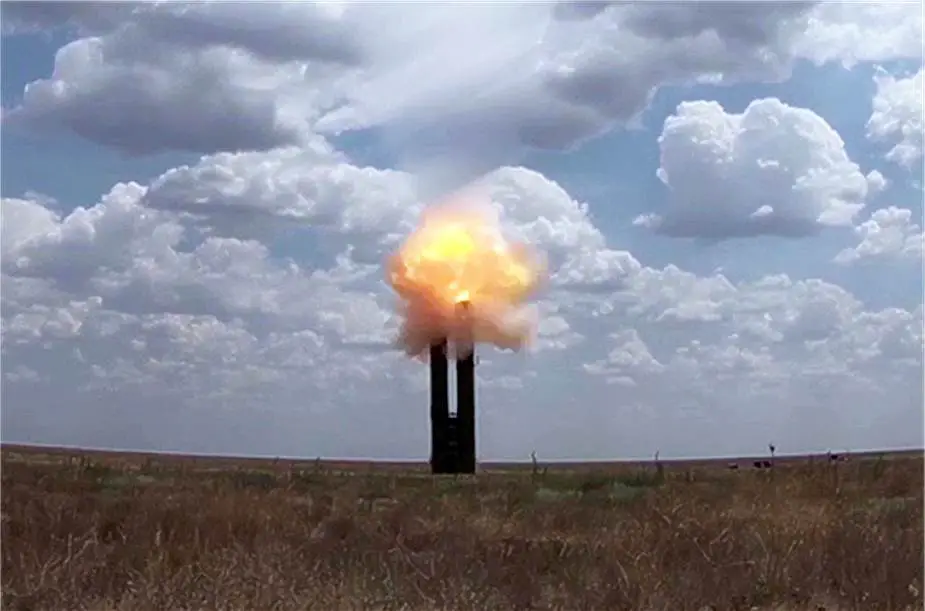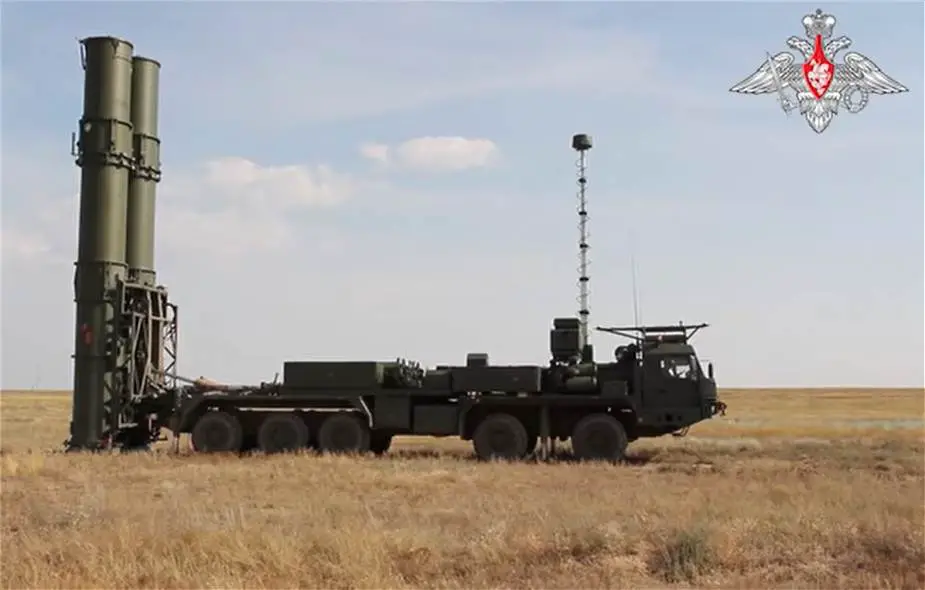Analysis: The new Russian-made S-550 air defense missile system
The latest S-550 air defense system is a mobile development of the strategic A-135 Amur and A-235 Nudol air defense and will operate by kinetic interception instead of a nuclear blast, TASS military writer Dmitry Litovkin said.
Follow Army Recognition on Google News at this link

The S-550 could be an improved version of the S-500 that was recently tested by the Russian armed forces. (Picture source Russian MoD Youtube account)
“Russian Defense Minister Sergey Shoigu recalled that the supreme commander-in-chief held another series of meetings in Sochi on November 1-3 with the leadership of the Defense Ministry and defense enterprises. They considered adequate response to the changing situation close to Russian borders. Much attention was paid to the improvement of the national aerospace defense. The head of state focused on the significance of accelerated development of national air and missile defense systems and the supplies of S-350, S-500 and S-550 to the troops,” the Defense Ministry said.
Commenting on Shoigu’s statement, a source close to the Defense Ministry said the Russian army would receive the first S-550 by 2025, as is envisaged by the arms program up to 2027. A brigade set is to be initially delivered. S-550 will have a mobile launcher.
There is no official confirmation of the information and it will hardly appear soon. However, one can think about the designs of the Russian defense industry in the sphere of strategic missile defense.
Almaz-Antey disclosed S-500 in a company calendar. Its combat capabilities are made public only by the leadership of the company. So far, it is clear that Almaz-Antey has designed S-400 Triumf, S-500, strategic A-135 Amur missile defense and its successor A-235.
Open sources said S-550 was developed in Soviet times by Almaz Central Design Bureau under the leadership of designers general Boris Bunkin and Alexander Lemansky. They created a close-range interception of strategic targets, such as reentry vehicles of intercontinental ballistic missiles. In contrast to stationary A-135 deployed around Moscow and protecting the Central industrial region (13 regions of a space of 486 thousand square kilometers and a population of over 32 million people), the new system has to be mobile for redeployment to dangerous directions similar to S-300/400/500.
The complex was practically ready in the early 1990s, however, the Soviet collapse stopped the project. Open sources said the project documentation and full-size prototypes were destroyed.
In 2014, Almaz-Antey Designer General Pavel Sozinov said Russia was creating analogs of US missile defense systems to intercept intermediate-range ballistic missiles and reentry vehicles of intercontinental missiles. The talk was about the S-500, which had to be united with the A-135 missile defense of Moscow.
“An analog of the system (US GMD) in a mobile option is also being created in the Russian Federation. It has different characteristics. The Defense Ministry told us to ensure better interception effectiveness than the Americans provide,” Sozinov said adding prototypes of the complexes will be provided to the Russian army in the near future.

Russia has set up the basic space segment of its missile attack early warning system to continuously monitor US territory for possible ballistic missile launches. (Picture source Russia MoD)
Russian Missile Defense System:
The Russian missile defense has several echelons. Cosmos and Tundra satellites monitor ballistic missile launches from space. Their mission is to warn about the launch of an intercontinental missile from the ground or by a submarine.
The alarm comes to the information center of the Russian missile defense in Sofrino near Moscow. Experts said it will take US missiles 21 minutes to fly to Moscow. Don radar will detect them seven minutes before they reach the capital city.
The radar detects flying ballistic missiles, tracks them, determines coordinates, analyzes dummy targets, provides guidance to antimissiles, automatically searches for and determines coordinates of space objects and transmits the trajectory data to the space control center.
Don is equipped with fixed big-aperture active phased receiving and transmitting antennas with a diameter of 18 meters. The maximum capacity produces a 250 MW signal to detect an object of the size of a tennis ball. The radar can monitor over a hundred targets and precisely guide 52T6 antimissiles. Voronezh radars have complemented Don to create a total radar field along the national perimeter.
The Russian army operates three radar options: Voronezh-M in the meter band, Voronezh-DM in the decimeter band, and Voronezh-SM in the centimeter band. They are deployed in Leningrad, Kaliningrad, Krasnoyarsk and Altai regions. Another three radars have to be built in Murmansk region, Komi and Sevastopol. They will be Yakhroma radars, which are an upgrade of Voronezh. All the radars will operate in a single information field.

On July 20, 2021, Russia has unveiled the S-500 during a live firing test that was held during a training exercise at the Kapustin Yar range, (Picture source video footage Russian MoD)
Early Warning System of Russia
The Russian Defense Ministry said a fully upgraded early warning system would be deployed by 2030. At present, it covers the whole Russian territory but will increase capabilities by 2030 to repel strikes of new weapons, which are being created today. They mostly include hypersonic missiles. The early warning system will detect targets via the North Pole. The direction was the most unprotected for many years in the USSR and modern Russia.
The S-500 is a mobile air defense missile system based on the chassis of a military truck. The Russian Defense Ministry has recently disclosed its outlook and showed the launch of a missile in a video. Nothing is known about S-550, but Litovkin believes it will complement S-500. It was reported that the system can destroy reentry vehicles and low-orbit satellites. The Russian military has likely decided to divide the functions between the two launchers.
S-550 can be a mobile development of Amur A-135 and Nudol A-235. In contrast to S-500 missiles, the antimissiles of A-135 and A-235 are equal to ballistic missiles in size. It can be concluded that in contrast to S-500 the launcher will carry one instead of two transportation-launch containers. The prime mover is likely to resemble that of Yars. The transloader of the 51T6 missile is a six-axis MAZ-547A truck.
In the Soviet Union, reentry vehicles had to be intercepted over the central industrial area by an opposite nuclear explosion. S-550 is likely to operate differently by kinetic interception.
The United States has been dealing with missile defense for years. Russia is likely ready to put such systems on duty. S-550 is likely a development of A-135, which will be complemented by a new echelon of A-235 terminal high altitude interception and its mobile analog.
Foreign media said the first successful test of the missile was held in November 2015. In March 2018, the sixth test of A-235 was held in Plesetsk for the first time with a mobile launcher.
In January 2019, the CNBC TV channel quoted US intelligence sources as saying that a satellite interception missile was successfully tested. In 2020, it was reported that the missile was accepted into service in Russia.


























